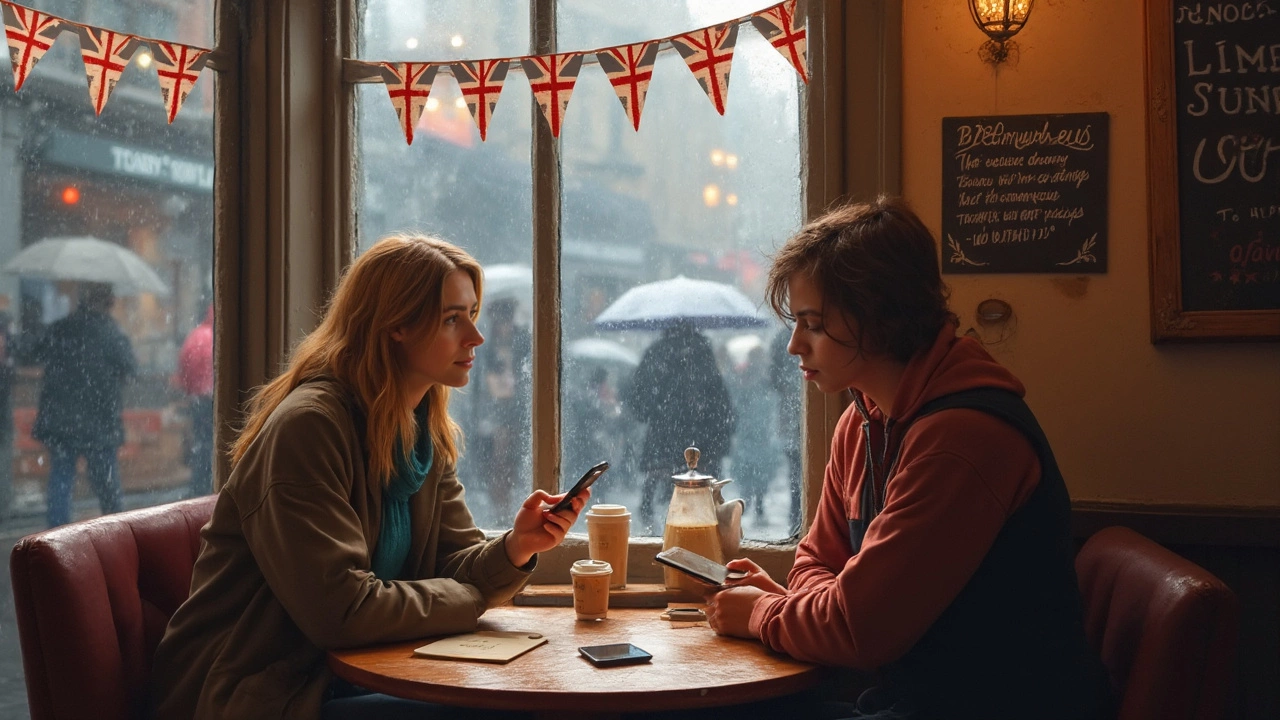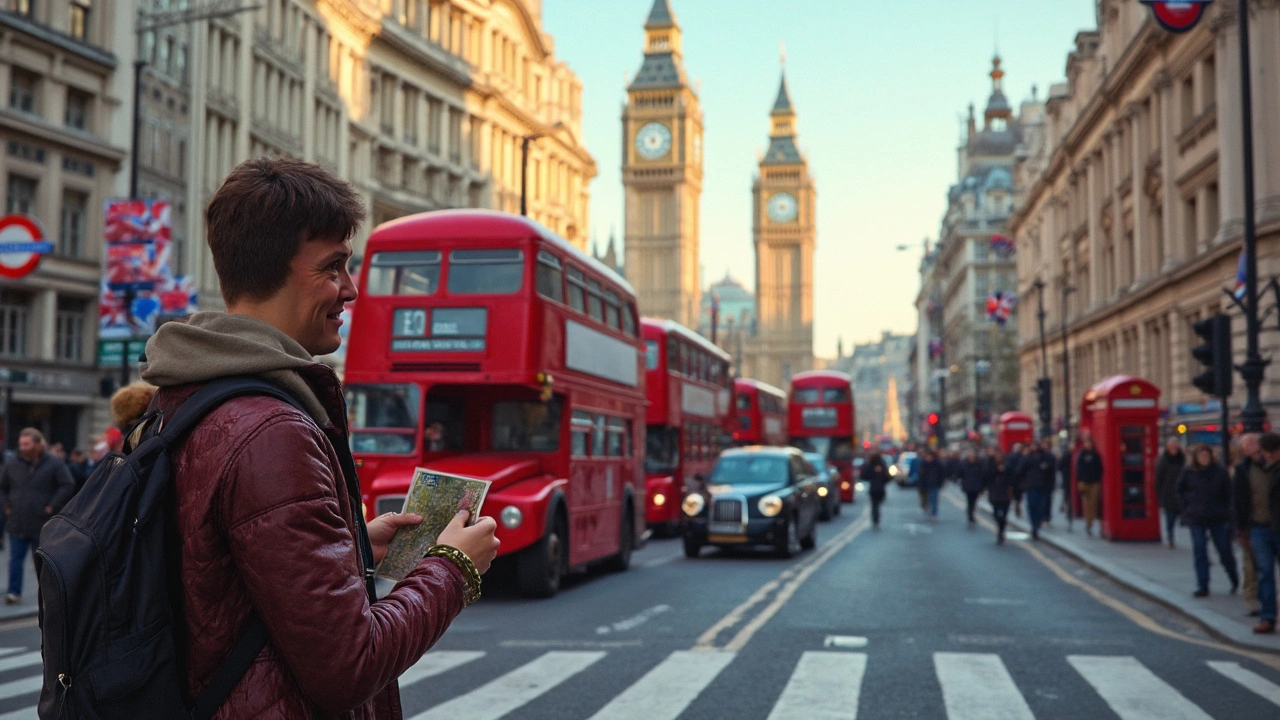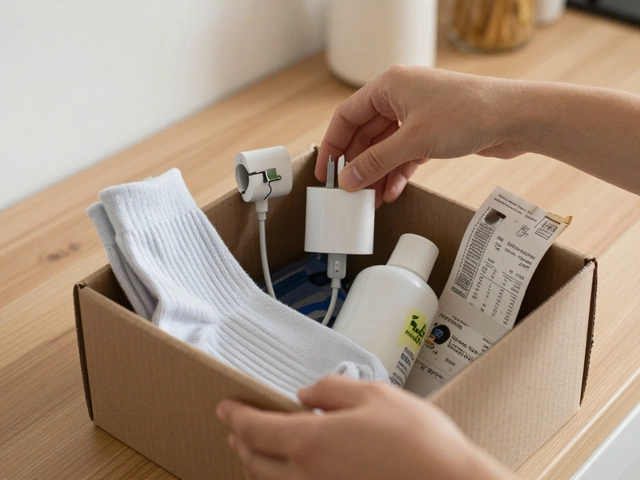Jet lagged and clutching a coffee, I landed in Heathrow for the first time with zero clue if my American debit card would work in a London cab or how to ask where the bathroom was without getting blank stares. London is awesome, but it runs on its own set of rules, and it’s easy to feel out of step your first couple days.
For starters, bring a UK plug adapter—your American phone charger won’t fit their sockets. Trust me, nothing’s worse than your phone dying when you’re lost on the Tube. And speaking of the Tube, that's their subway. Get yourself an Oyster card or just tap a contactless card (most US cards work, but double check with your bank for foreign transaction fees).
It’s not just the electrical outlets that are different – even crossing the street is backwards. Cars drive on the left, so look right before you step off the curb, or “pavement” as they call it. Public toilets are usually clean but finding a free one can be tricky. Some charge a small fee, so keep coins handy.
London’s full of surprises if you know where to look. Stick with me to avoid rookie mistakes and start feeling like a local by your second day. There are a few unspoken rules (spoiler: don’t cut the queue), but nothing you can’t handle with the right heads up.
- Understanding UK Basics
- Transportation and Getting Around
- Money, Payments, and Tipping
- Simple Etiquette and Everyday Life
Understanding UK Basics
The first rule of landing in London? Realize that nearly everything is just a bit different—even the words. Let’s break down what you really need to know so you don’t stick out like a sore thumb your first day.
Electricity runs at 230 volts with a big, chunky three-prong plug. Bring a UK travel adapter. If you plug your nice American hairdryer straight into the outlet without a voltage converter, it’ll fry, so check your devices first.
The UK uses British pounds, not euros. Cash is handy for street markets and small shops, but most places are card-friendly now, even buses. ATM machines are called “cashpoints.” Coins can pile up fast—find a use for 1p, 2p, and 50p pieces or spend them on your morning coffee.
Some words differ too. The trunk of a car is a "boot," French fries are "chips," and the busy downtown? That’s "the City." If someone asks you for a “rubber,” they mean an eraser (really).
- Driving and walking: Stay alert. Cars drive on the left. Pedestrian crossings say “Look Right” for a reason.
- Stores close early: Many shops shut by 6pm except on "late nights" (usually Thursdays).
- Water: Tap water is safe everywhere in London.
- Weather: Pack layers. London weather is all over the place—even in summer.
Jet lag isn’t just in your head—the time difference from New York to London is five hours ahead. Your body will feel it, especially flying overnight. Meal times are close to American schedules, though restaurants might open later for dinner. Try a "full English breakfast" if you get up early and want to eat like a local.
| Need-to-Know London Basics | Details |
|---|---|
| Currency | British Pound (£). As of June 2025, 1 USD ≈ £0.78 |
| Power Plugs | Type G, 230 volts. Adapter required. |
| Time Zone | GMT+1 (BST in summer) |
| Emergency Number | 999 (police, fire, ambulance) |
| Tipping | 10-12% in restaurants if not already included |
The travel tips you just read are the difference between arriving clueless and hitting the ground running your first time in London. Now you're not just another American trying to charge your phone in a café socket marked "For Staff Only."
Transportation and Getting Around
The quickest way to get around London is the famous Tube, which stands for the London Underground. It can look intimidating at first with its spaghetti-like map, but it’s super efficient. Pick up an Oyster card as soon as you land, or use your contactless debit or credit card if you have one—American cards work on the turnstiles at most stations, but double-check with your bank about international fees before you go.
Buses are another easy option. They accept the same Oyster and contactless cards, and they don’t take cash. Most routes run 24/7, so they can be a lifesaver if you find yourself out past the last Tube (which stops running around midnight for most lines during the week). And yes, London’s famous red double-decker buses aren’t just a tourist thing—locals use them every day.
| Transport | Payment Type | Average Cost (2025) | Tips |
|---|---|---|---|
| Tube (single journey, Zone 1) | Oyster/contactless | £2.80 | Cheaper after 9:30am weekdays |
| Bus (single hop) | Oyster/contactless | £1.75 | No cash accepted |
| Taxi (Black Cab) | Cash/card | £10-£20 (for short trips) | Uber also works well |
| TfL Rail/Overground | Oyster/contactless | Varies by distance | Great for outer neighborhoods |
Walking is honestly one of the most enjoyable ways to see the city. Lots of the main museums, markets, and historic spots are within a mile or two of each other. Just remember to check the weather—a London rain can sneak up on anyone, so toss a compact umbrella in your bag.
Taxis are everywhere, but they’re pricey for daily rides—Uber is in London, but you also have Bolt and FreeNow as alternatives. If you hop in a black cab, most drivers know the city inside out (it’s actually part of their training called "The Knowledge"), and you can pay with a card, which is handy if your cash is running low.
Bikes are another option: Santander Cycles (locals call them Boris Bikes) are dotted all over the city. You tap your card at a docking station and go. Helmets aren’t provided, so bring your own if you’re nervous, and remember—traffic’s on the left!
For major airports like Heathrow or Gatwick, the Heathrow Express and Gatwick Express trains are the fastest connections into the city center, but they’re pricier than the Tube or regular trains. Don’t forget that most Londoners avoid driving unless they have to—the traffic and congestion charges make it more headache than it’s worth for visitors.
So, when it comes to London, think smart: grab an Oyster or use your card, choose the Tube during rush hour, and never be afraid to ask a local for directions—they’re usually happy to help, and sometimes you get a story out of it.

Money, Payments, and Tipping
First off, London runs on pounds, not dollars—so when you see a price tag, it’s in GBP (£), not USD. Using cash is becoming rare in London. Most places, from tiny sandwich shops to museums and buses, prefer cards or mobile payments. If all you’ve got is cash, you’ll miss out on a lot of convenience. Before traveling, check if your credit or debit card charges foreign transaction fees; even better, bring a no-fee travel card if you have one.
Contactless payment is king here. Simply tap your card or phone pretty much everywhere. Apple Pay and Google Pay also work in most places. I remember getting caught out at a bakery near Covent Garden that would only take cards. No cash, no cake. Most U.S. issued credit cards are accepted (especially Visa and Mastercard), but Amex isn’t as popular.
Here’s a quick look at payment options and where you’re likely to use them:
| Payment Method | Where Accepted | Notes |
|---|---|---|
| Contactless Debit/Credit Card | Everywhere | Fastest, by far the most common |
| Mobile Pay (Apple/Google) | Most shops, transport * | Must be linked to accepted card |
| Cash (GBP) | Some shops, market stalls | Rarely needed; carry £10-£20 for emergencies |
| American Express | Some restaurants or hotels | Often rejected in small shops |
Now, the confusing part for a lot of Americans: tipping. In London, tips aren’t expected everywhere. At restaurants, service charge (usually 12.5%) is often added to your bill automatically. Always check the bottom of your receipt—if it’s there, you don’t need to add more. If you do want to leave extra because the service was great, round up or leave some change, but it’s totally optional.
- Restaurants: Check if service charge is included—if not, 10-12% is typical.
- Pubs and bars: No tip expected for ordering at the bar, but rounding up is fine if you feel like it.
- Taxis: Usually rounded up to the nearest pound; drivers don’t expect big tips.
- Hotels: Porters might get £1-2 per bag; not mandatory, but appreciated.
So, bring a contactless card, keep a little cash for rare cases, and don’t stress about tipping. Londoners aren’t hovering over your table waiting for extra cash. The only thing you don’t want to forget is the fact that your London travel will be way easier if your cards are sorted in advance.
Simple Etiquette and Everyday Life
If there’s one thing I learned fast in London, it’s that people take queuing (that’s standing in line) very seriously. No matter where you are—grocery store, bus stop, even the elevator—you queue up and wait your turn. Trying to sneak ahead is probably the fastest way to get side-eyed by everyone there.
Personal space is also sacred. You’ll notice people spread out on trains and buses if they can. Talking to strangers isn’t as common as in the US, and voices tend to stay low in public. It’s not rudeness, just how people do things.
If you’re riding the escalator in the Underground, stand to the right. The left side is for people in a hurry. There are signs everywhere, but Americans miss this all the time and end up blocking the way. Little things like this help you blend in and not look so lost.
When you’re talking to shop staff, bus drivers, or really anyone providing a service, a quick “please” or “cheers” goes a long way. “Cheers” means thanks and you’ll hear it everywhere, from pubs to coffee shops. British politeness is real—don’t be surprised if you hear someone apologize when you accidentally bump into them.
Here’s what else to keep in mind for daily life:
- Travel tips matter: Keep an umbrella with you. London weather can switch from sun to rain in minutes.
- Tipping isn’t as expected as in the US. Sometimes there’s a service charge on your bill already. If not, 10-12% is the norm for restaurants, but nobody tips bar staff or taxi drivers much.
- Most bathrooms are called "toilets" or "loo." Asking for the “bathroom” might get you confused looks, since that usually means a room with an actual bath.
- Trash goes in the "bin." Public bins exist but sometimes they’re hard to find in parks or older neighborhoods, so don’t panic if you have to hang onto your garbage for a while.
- Jaywalking isn’t a legal issue like in some American cities, but still—watch out for those fast-moving cabs and double-decker buses.
At the end of the day, watching and following what locals do is your best bet. Pay attention, stay polite, and you’ll settle into the London groove before you know it.










